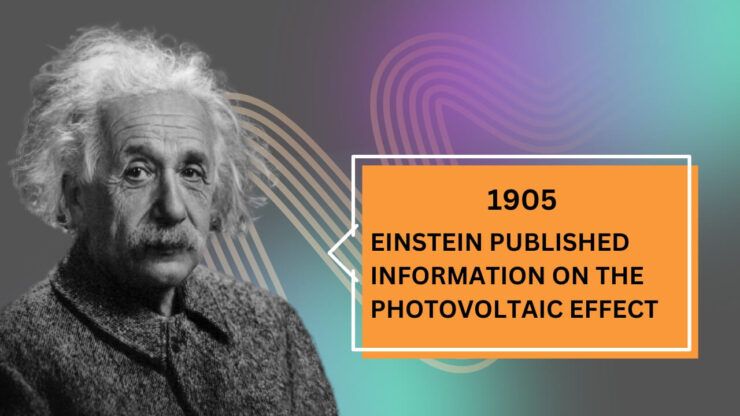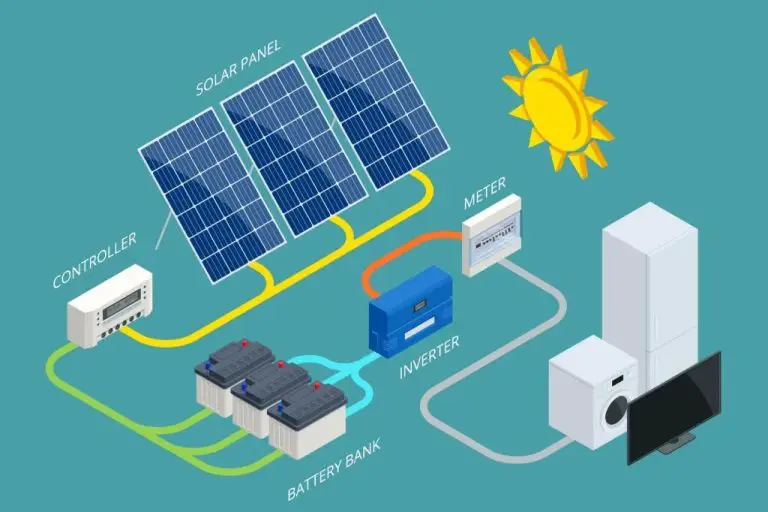Did Einstein Invent Solar Panels?

Albert Einstein is widely regarded as one of the greatest geniuses in human history. His groundbreaking theories of relativity fundamentally changed how scientists understand space, time, energy, and gravity. Many consider Einstein to be the father of modern physics. His work led to revolutionary inventions like lasers, nuclear power, GPS navigation and more. But did this acclaimed theoretical physicist also invent one of today’s most important renewable energy technologies – the solar panel?
While Einstein did not directly invent photovoltaic solar panels, his pioneering research in physics paved the way for their development. This article explores Einstein’s contributions to solar technology, the true history of solar panels, and how the great scientist’s vision for harnessing the power of the sun inspired generations of inventors and renewable energy advocates.
Einstein’s Scientific Contributions
Albert Einstein is best known for developing the theory of relativity, but he made many important contributions to science. Some of his most significant scientific achievements include:
Theory of Special Relativity: In 1905, Einstein published his theory of special relativity, which showed that time and motion are relative to the observer. This theory revealed that the speed of light is constant and that mass and energy are interchangeable through the famous equation E=mc2. Special relativity fundamentally changed our understanding of space and time.
Photoelectric Effect: Einstein received the 1921 Nobel Prize in Physics for explaining the photoelectric effect. He proposed that light can be thought of as individual particles called photons. This discovery formed the foundation for quantum theory.
Gravitational Waves: In 1916, Einstein predicted the existence of gravitational waves – ripples in spacetime that travel at the speed of light. In 2015, scientists detected gravitational waves for the first time, confirming another of Einstein’s major theories. This opened up the field of gravitational wave astronomy.
In addition to these monumental achievements, Einstein also made advancements in statistical mechanics, cosmology, and unified field theory. His brilliant ideas revolutionized physics and our comprehension of the universe.
Einstein’s Interest in Solar Energy
Although Einstein did not directly invent the solar panel, he made revolutionary scientific discoveries that paved the way for solar technology. In a 1905 paper, Einstein proposed the theory of the photoelectric effect, which explains how light can eject electrons from certain materials. This discovery was essential for harnessing solar energy. Einstein predicted in 1916 that “there is a possibility for power production through the conversion of light into other forms of energy,” and described a solar thermal technology using curved mirrors to concentrate sunlight (Source).
In a 1931 speech at the California Institute of Technology, Einstein again spoke of solar energy’s potential, saying “I believe that with the help of such ‘friendly giants’ as the sun, water power, winds and tides, not only can the acute physical suffering of Want be relieved, but that life can be made richer for us all.” While Einstein himself did not build solar panels, his theoretical work enabled later engineers to develop photovoltaic technology that converts sunlight directly into electricity.
History of Solar Panels
The discovery of the photovoltaic (PV) effect dates back to 1839 when French physicist Edmond Becquerel first observed it at just 19 years old. He realized that certain materials would produce small amounts of electric current when exposed to light. Becquerel’s early experiments with the PV effect laid the groundwork for the modern solar cell.
Over a century later, in 1954, researchers at Bell Labs in the United States developed the first practical silicon solar cell with a sunlight conversion efficiency of around 6%. This pioneering work opened the door to the modern solar panel industry by demonstrating the feasibility of generating useful amounts of electricity from sunlight using semiconductors.
While Einstein did not directly contribute to these key early solar panel developments, his foundational work in physics helped enable major advances like the discovery of the photoelectric effect that made PV technology possible.
How Solar Panels Work
Solar panels work through the photovoltaic effect, which describes how certain materials can convert sunlight directly into electricity. The key material in solar panels is semiconductors such as silicon, which have a unique atomic structure that allows them to absorb photons from sunlight and release electrons (Retrieved from https://www.iop.org/explore-physics/physics-around-you/sustainable-building/solar-panels). When sunlight hits the solar panel, the photons strike the semiconducting material and knock electrons loose, allowing them to flow freely. Electrodes are embedded in the semiconductor material to form an electrical circuit, capturing the electrons and producing an electric current. This electricity generated can then be used to power homes, businesses and the grid.
The photovoltaic effect and semiconducting materials are key to converting sunlight directly into electricity. Solar panel designs maximize the surface area of these semiconductors exposed to sunlight to increase power output. While solar panel efficiency is still improving with advanced materials, the fundamental working principles have been understood since the early days of photovoltaic research and development (Retrieved from https://pickmysolar.com/how-solar-panels-work/). Today, solar panels efficiently harness the photovoltaic effect at scale to provide renewable electricity around the world.
Solar Panel Adoption Timeline
The early adoption of solar panels was in the space industry, starting in the late 1950s. The Vanguard 1 satellite launched by the United States in 1958 had solar cells to power its radios. This demonstrated the feasibility of using solar power in space. Through the 1960s and 1970s, solar panels became a common feature on spacecraft to provide power.
On Earth, solar power was slower to gain adoption. The biggest growth came in the 2000s, as solar panel costs came down and residential installations expanded. In the United States, there were only 7,000 homes with solar panels in 1998. By 2014, there were nearly half a million homes. California led this growth, accounting for over 50% of residential solar capacity in the country from 1998 to 2013.[1] Government incentives helped accelerate adoption during this period.
Global residential solar capacity grew from 1.4 gigawatts in 2004 to 201 gigawatts by 2018. This made rooftop solar a significant contributor to renewable energy expansion worldwide.[2] Continued cost declines and supportive policies suggest strong ongoing growth in residential solar adoption.
Recent Solar Panel Innovations
In recent years, there have been many exciting developments in solar panel technology leading to thinner, more flexible, and more efficient solar panels.
One key innovation has been the improvement of thin-film solar cell technology. Thin-film solar cells use a very thin layer of photovoltaic material, allowing manufacturers to produce lightweight and flexible solar panels. Materials like cadmium telluride (CdTe) and copper indium gallium selenide (CIGS) have enabled thin-film panels to achieve efficiencies over 20% [1]. Thin-film solar is also easier to install than traditional panels.
Perovskite solar cells are another promising technology. Perovskites are inexpensive to produce and can be printed onto thin, flexible surfaces. Researchers have steadily improved perovskite efficiency to over 25%. While durability is still a challenge, perovskites have the potential to enable inexpensive, highly efficient solar [2].
Organic solar cells made from carbon-based materials like plastics and dyes are also advancing. While not as efficient as inorganic cells yet, organic photovoltaics can be made into any color, shape, size and transparency. This opens up many potential applications like solar windows and mobile device charging [3].
Einstein’s Indirect Influence on Solar Technology
Although Einstein did not directly invent solar panels, his research into the photoelectric effect laid the foundations for modern solar technology. In 1905, Einstein published a paper explaining the photoelectric effect, for which he later won the Nobel Prize in 1921. The photoelectric effect describes how light can eject electrons from a metal surface. Einstein realized that light traveled in discrete packets of energy called photons, and that shining light onto a metal surface could excite electrons to the point where they escape the metal. This groundbreaking discovery revealed the particle-like nature of light.
Later scientists realized they could produce an electric current by capturing these ejected electrons. The first solar cells built on Einstein’s work appeared in the 1950s. These early solar cells, made of silicon, converted sunlight directly into electricity using the photoelectric effect Einstein had described decades earlier. Without Einstein’s theoretical work explaining the quantum nature of light and the photoelectric effect, inventors may not have understood how to build a solar cell.
So while Einstein did not invent the solar panel himself, his research was instrumental in making photovoltaic solar power possible. As the Connect4Climate organization stated, Einstein was “The Father of Solar Cells,” even if he did not actively participate in their creation. His revolutionary ideas paved the way.
Solar Visionaries After Einstein
While Einstein did not directly invent solar panels, his work on the photoelectric effect laid the scientific foundation for harnessing solar energy. In the decades after Einstein, other pioneers advanced solar technology and brought it into the mainstream.
At Bell Labs, researchers developed the first practical silicon solar cell in 1954, with an efficiency of about 6%. This paved the way for widespread use of solar panels.
NASA played a key role by using solar panels to power satellites and spacecraft. The space agency’s work drove many solar innovations that later found earthly applications.
Major solar companies like Sharp, Kyocera, and BP Solar emerged in the 1960s-70s and helped make solar panels commercially viable.
Thanks to these post-Einstein pioneers, solar has grown from a niche technology into a major renewable energy source worldwide.
Conclusion
Despite his prestigious reputation as a thought leader in physics and mathematics, Albert Einstein did not directly invent solar panels. However, he recognized their potential for harnessing renewable energy from the sun. Through his advocacy for solar energy research, Einstein inspired future innovators who made direct contributions to photovoltaic technology.
While Einstein laid the theoretical groundwork of photoelectricity in the early 1900s, other key figures like Bell Labs researchers Russell Ohl, Calvin Fuller, and Gerald Pearson developed the first practical silicon solar cells in the 1950s. Subsequent improvements from solar companies in the 1970s-2000s have made panels vastly more efficient and affordable.
Today, solar power is the fastest growing energy source worldwide. With climate change driving adoption of renewables, the future is bright for solar panels. While Einstein did not invent the solar cell, his vision continues to shape the field. With ongoing innovations, solar energy may yet realize the boundless potential Einstein saw over a century ago.




